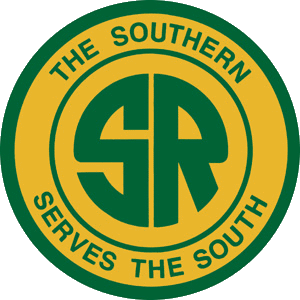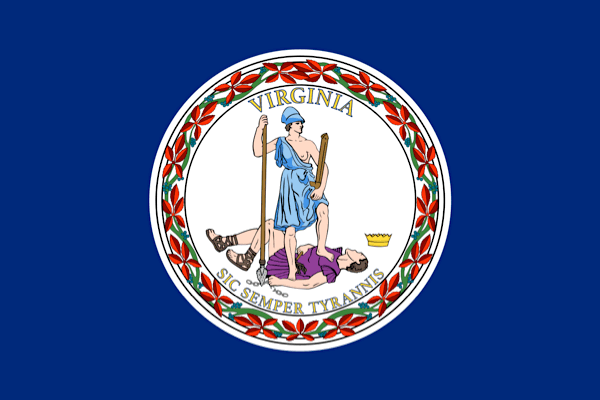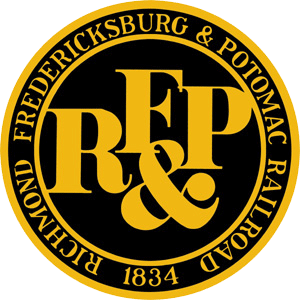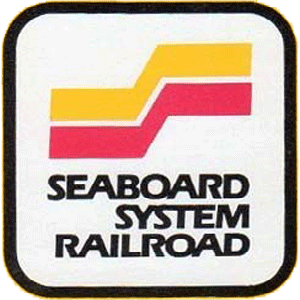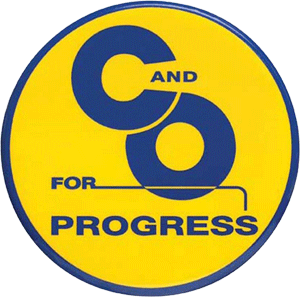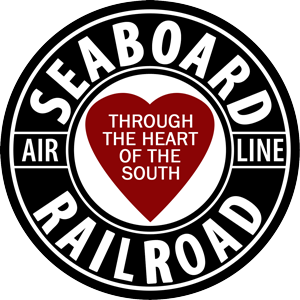
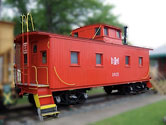






 |
Richmond Railroad MuseumSouthern Railway's Hull Street Station |
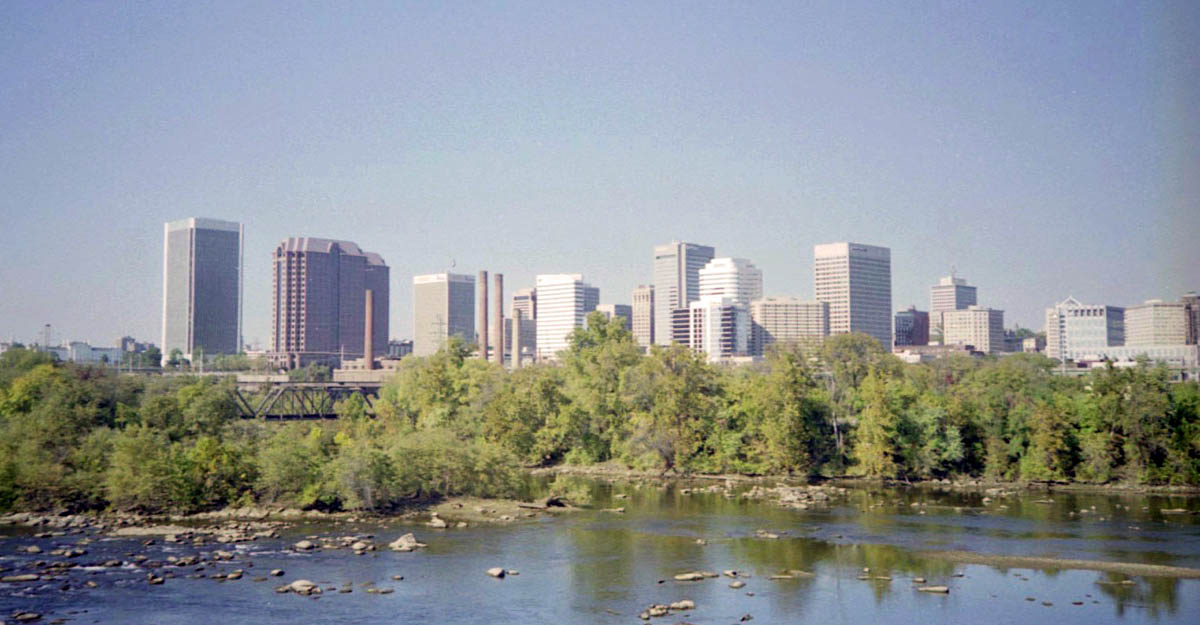
Richmond, Va / Oct 2001 / JCH

 Richmond has been served by multiple railroads since the 1830's. The five lines fanning out from the city in 1861 were a major reason for choosing Richmond as the capital of the Confederacy. With rail consolidation after the war, the names changed but for much of the 20th. century the city still hosted six major lines. The corporate headquarters of the Richmond, Fredericksburg and Potomac Railroad and the CSX were located in the city.
Richmond has been served by multiple railroads since the 1830's. The five lines fanning out from the city in 1861 were a major reason for choosing Richmond as the capital of the Confederacy. With rail consolidation after the war, the names changed but for much of the 20th. century the city still hosted six major lines. The corporate headquarters of the Richmond, Fredericksburg and Potomac Railroad and the CSX were located in the city.
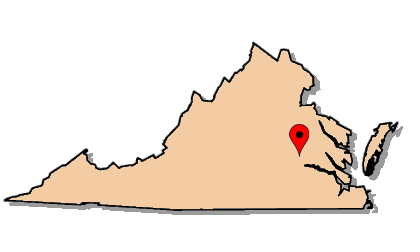
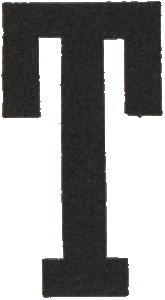 he Old Dominion Chapter of the National Railway Historical Society opened the restored historic Southern Railway Station in Richmond in 2011 as the new home of the Richmond Railroad Museum. The facility is the century-old former Southern Railway Hull Street passenger and freight station. The museum includes a stationmaster's office, freight room where the chapter's artifacts and exhibits are displayed, gift shop, and a gallery that includes Richmond's largest HO scale model railroad. Rolling stock on the grounds includes a steam saddle locomotive, baggage car, boxcar, and a caboose. The museum focuses on railroads which served central Virginia, and their impact on Richmond and its citizens. That chapter also maintains a railroad yard with numerous equipmen west of Richmond, along the former Southern Railway Richmond secondary. Public excursions are conducted in cooperation with the Buckingham Branch Railroad.
he Old Dominion Chapter of the National Railway Historical Society opened the restored historic Southern Railway Station in Richmond in 2011 as the new home of the Richmond Railroad Museum. The facility is the century-old former Southern Railway Hull Street passenger and freight station. The museum includes a stationmaster's office, freight room where the chapter's artifacts and exhibits are displayed, gift shop, and a gallery that includes Richmond's largest HO scale model railroad. Rolling stock on the grounds includes a steam saddle locomotive, baggage car, boxcar, and a caboose. The museum focuses on railroads which served central Virginia, and their impact on Richmond and its citizens. That chapter also maintains a railroad yard with numerous equipmen west of Richmond, along the former Southern Railway Richmond secondary. Public excursions are conducted in cooperation with the Buckingham Branch Railroad.

Click to see the Richmond Railroad Museum plotted on a Google Maps page

collection
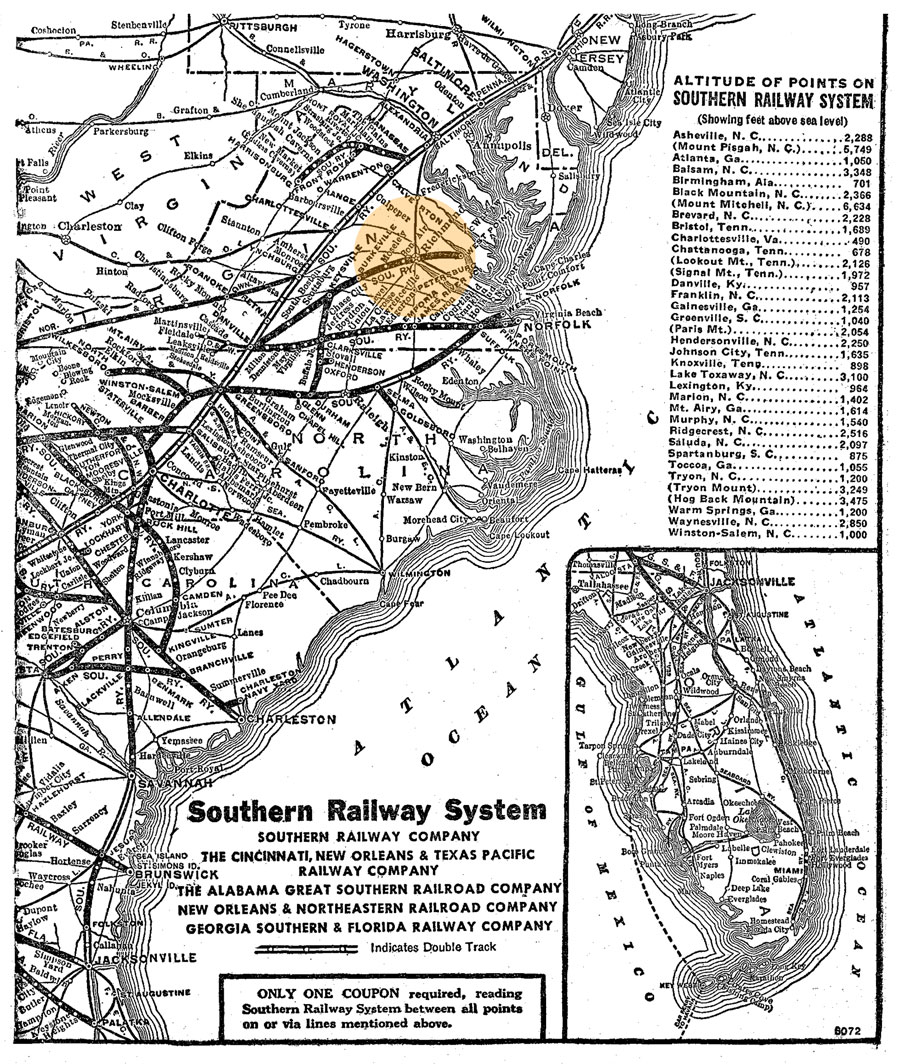
1948 Official Guide map / collection
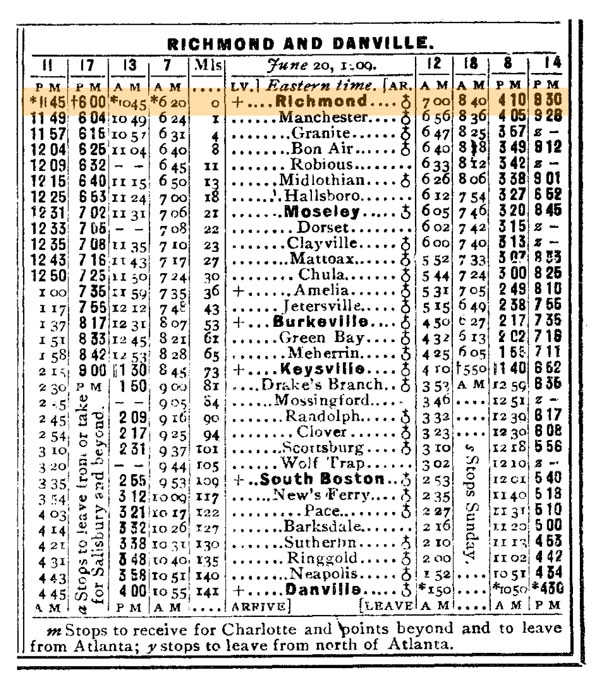
1910 Official Guide / collection
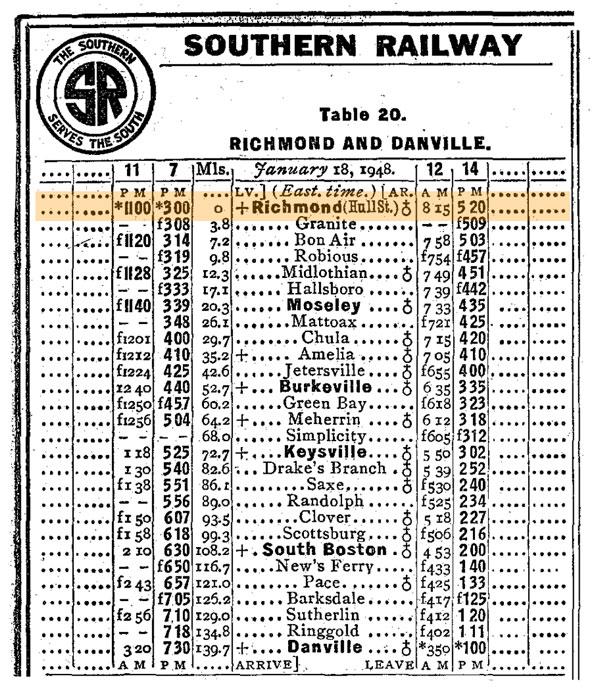
1948 Official Guide / collection
 Station
Station

Richmond, Va / Dec 2017 / RWH

Richmond, Va / Dec 2017 / RWH
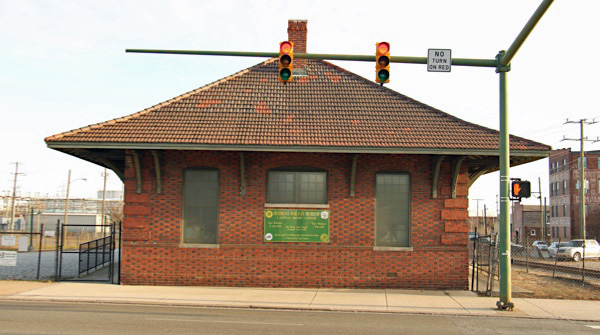
Richmond, Va / Dec 2017 / RWH
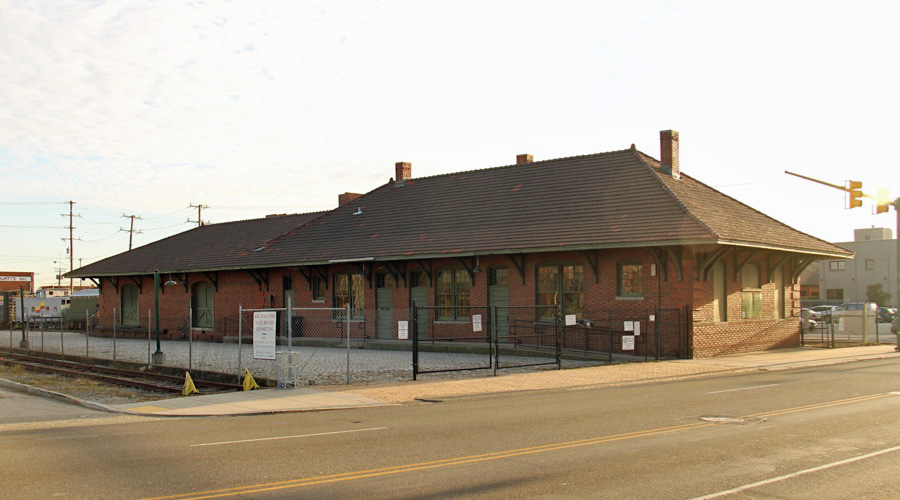
Richmond, Va / Dec 2017 / RWH

Richmond, Va / Dec 2017 / RWH
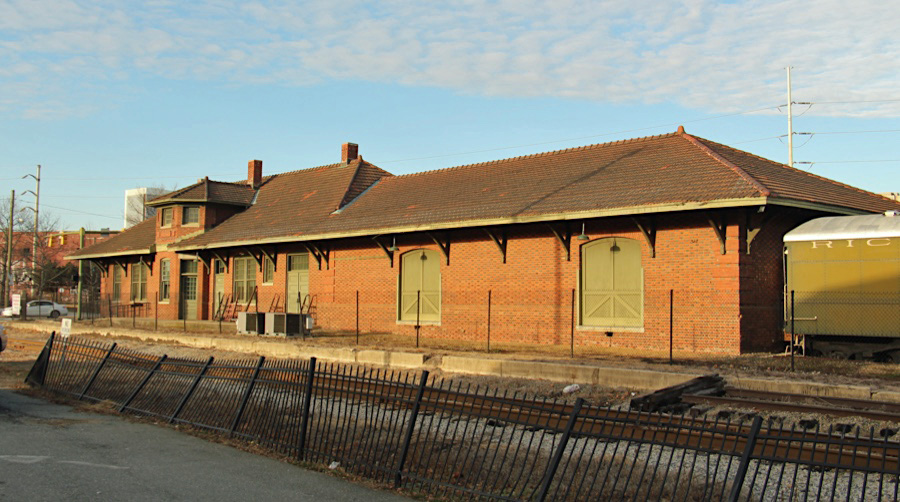
Richmond, Va / Dec 2017 / RWH
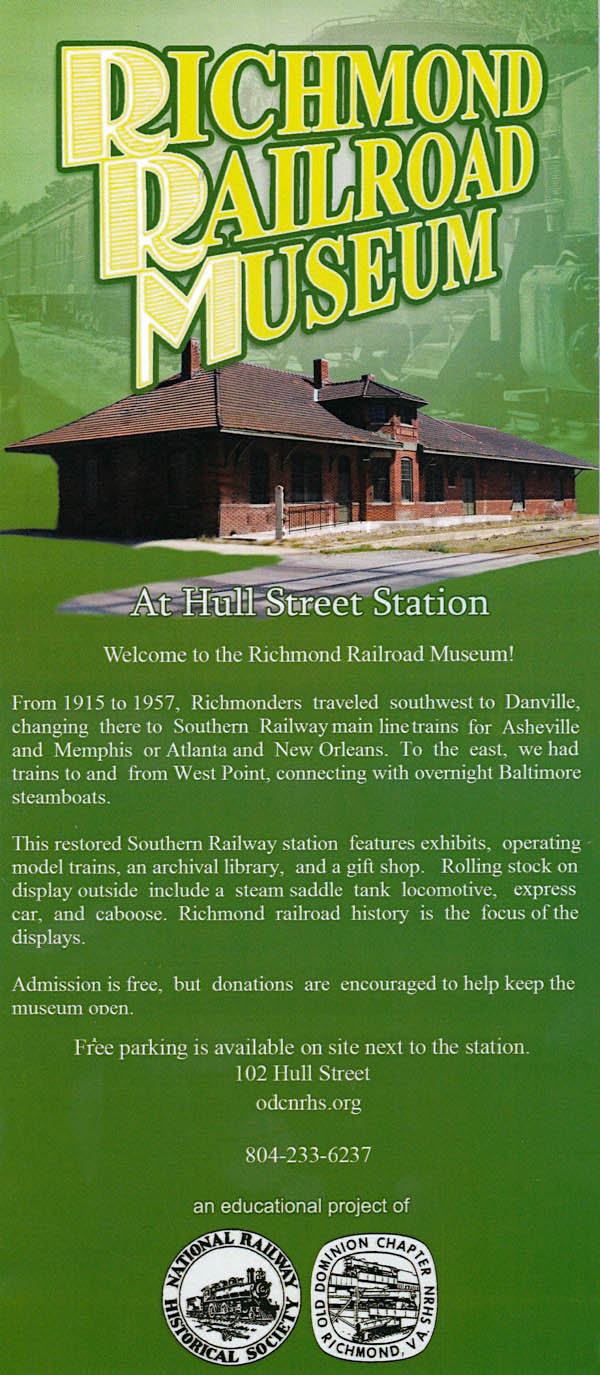
brochure / collection

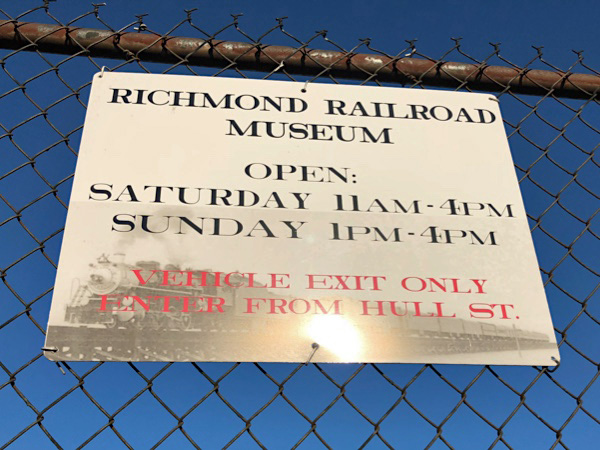
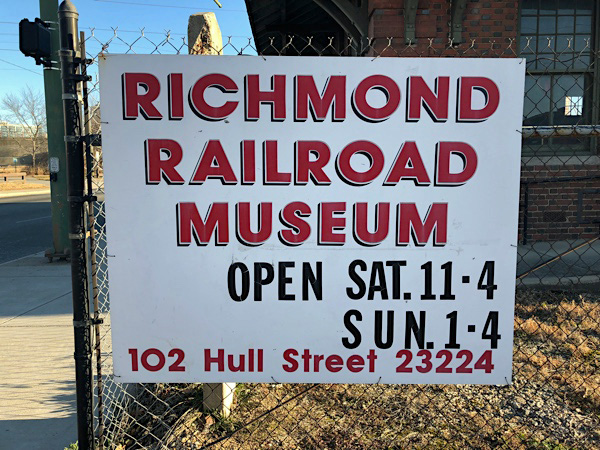
Richmond, Va / Dec 2017 / RWH
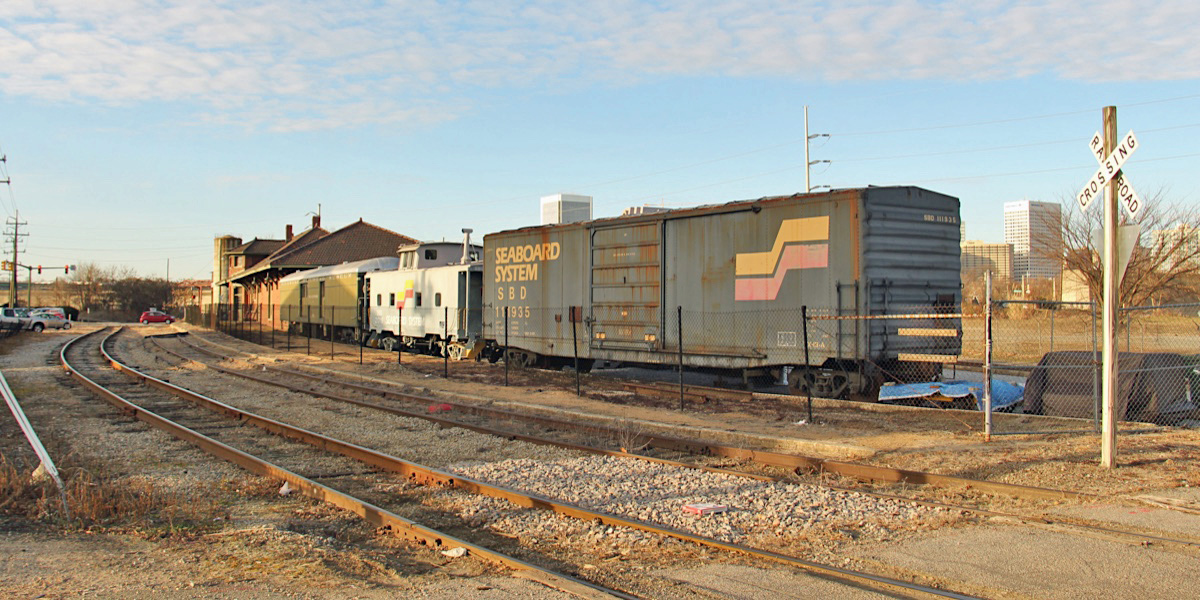
Dec 2017 / RWH

web

Richmond, Va / Oct 2001 / JCH
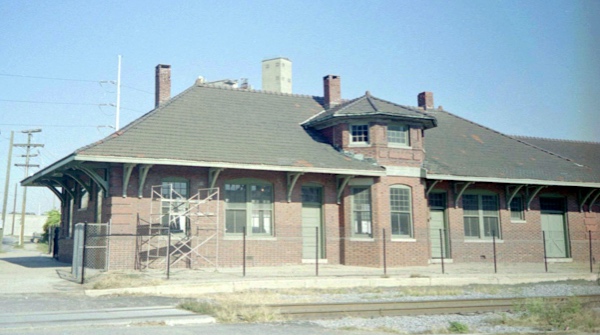
Richmond, Va / Oct 2001 / JCH
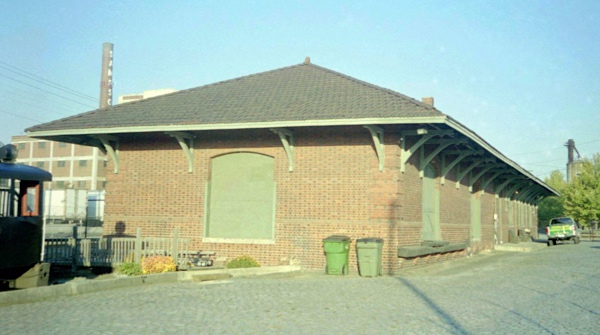
Richmond, Va / Oct 2001 / JCH
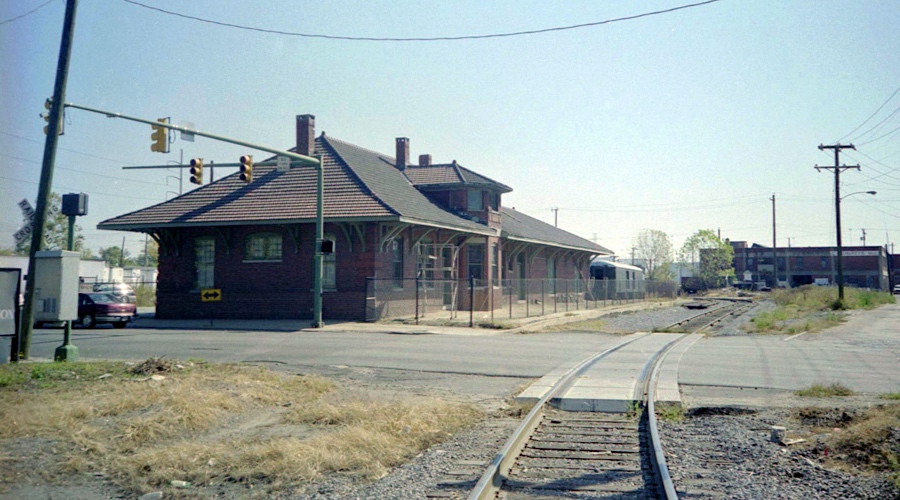
Richmond, Va / Oct 2001 / JCH
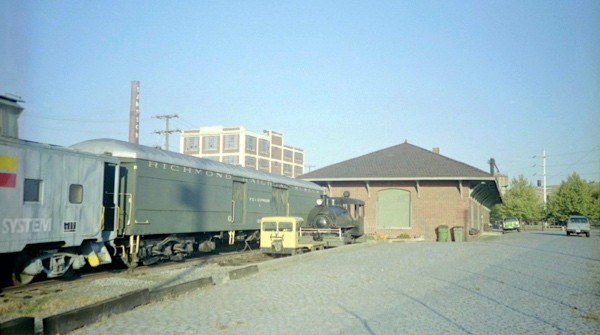
Richmond, Va / Oct 2001 / JCH
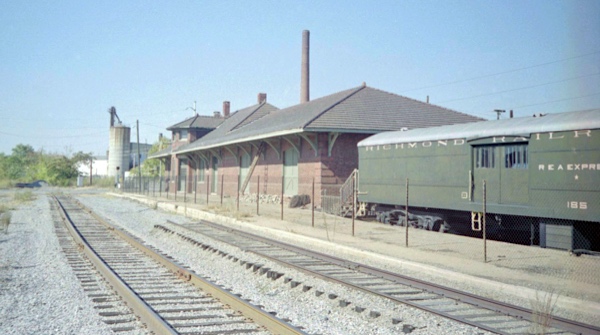
Richmond, Va / Oct 2001 / JCH
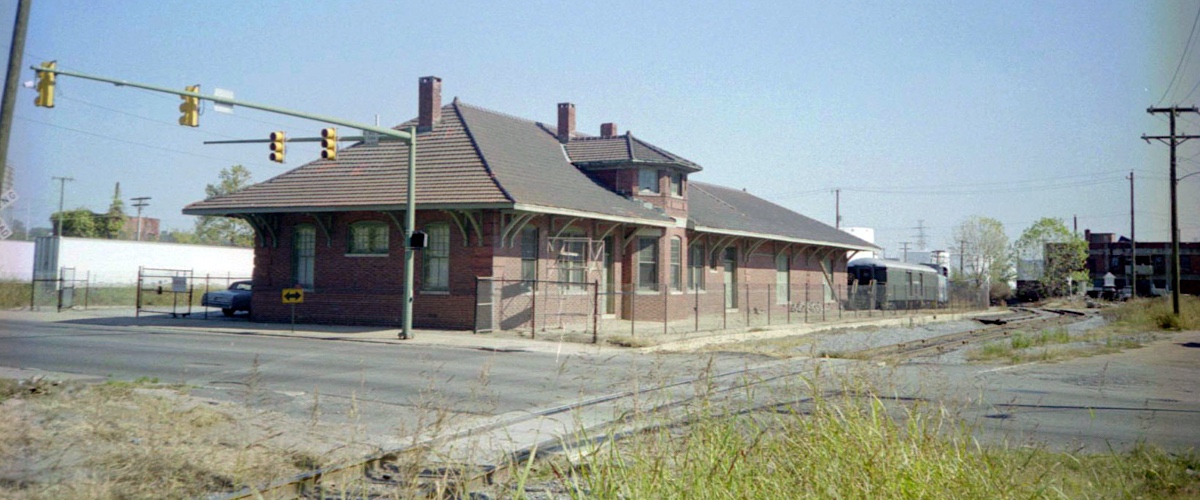
Richmond, Va / Oct 2001 / JCH
Rolling Stock
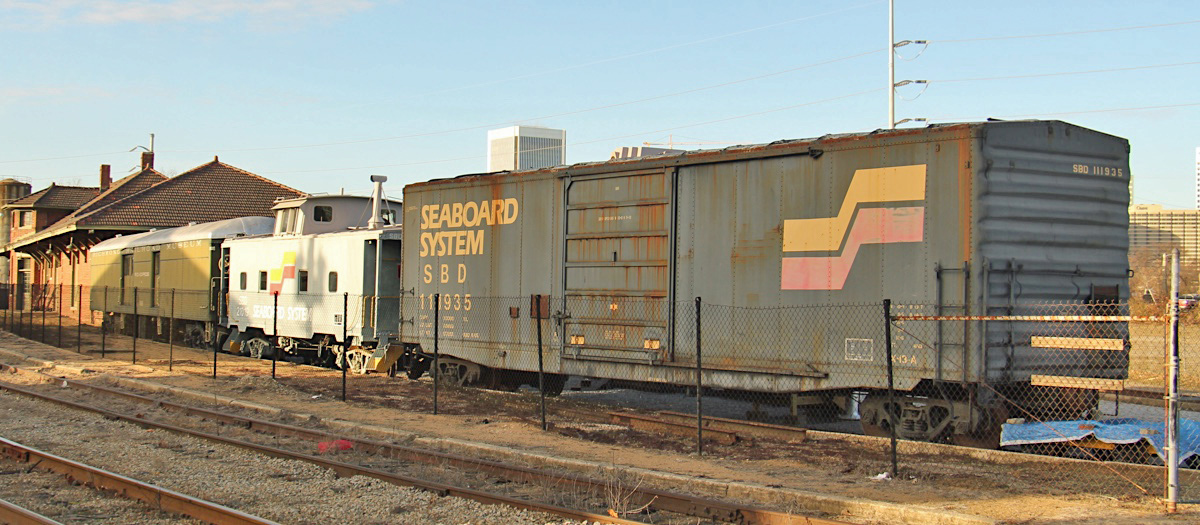
Richmond, Va / Dec 2017 / RWH
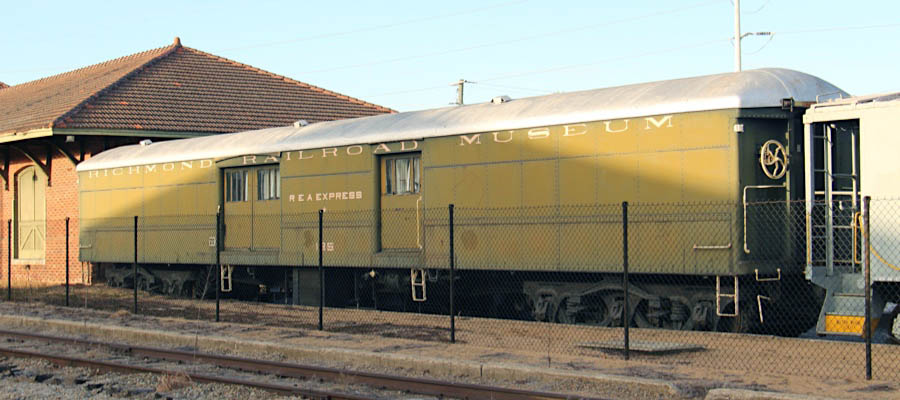
Richmond Railroad Museum #185
baggage car / Richmond, Va / Dec 2017 / RWH

Built by American Car and Foundry in 1937 and originally numbered 185 (one of six, 180-185; #1632). Converted and renumbered to Tool Car 230 in 1969. Donated by Richmond, Fredericksburg and Potomac in March 1984. Renovated and currently used at Richmond Railroad Museum. Renumbered to 185.
Old Dominion NRHS
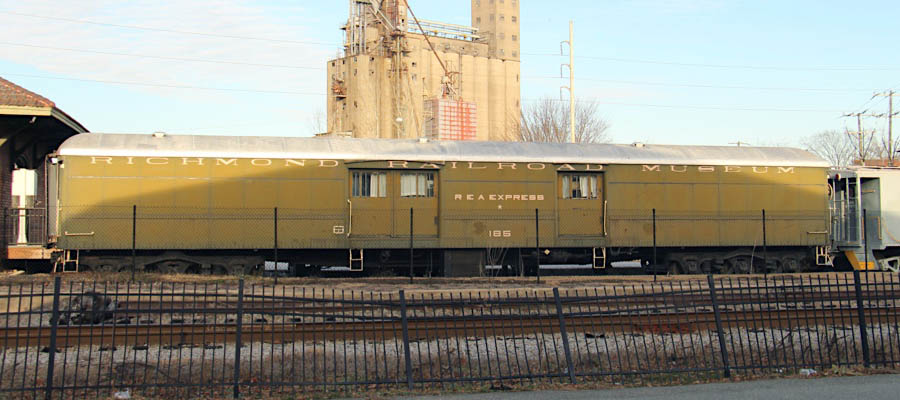
Richmond, Va / Dec 2017 / RWH
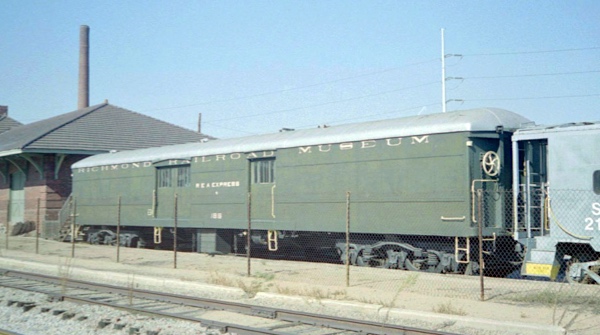
Richmond, Va / Oct 2001 / JCH
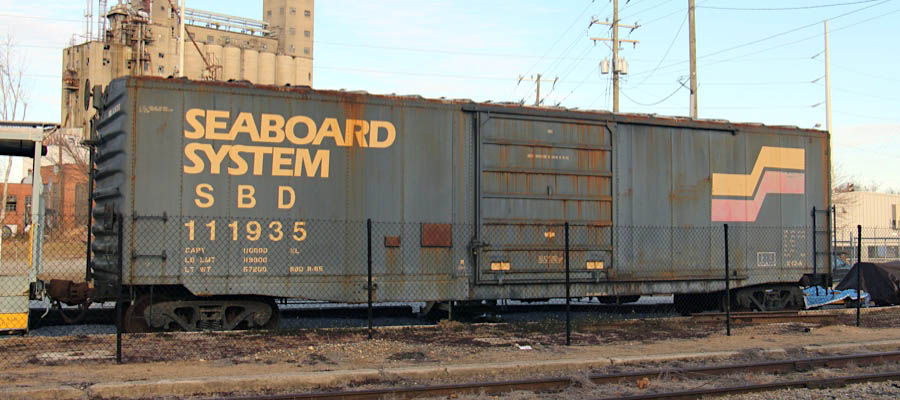
Seaboard System #111935
50' steel boxcar / Richmond, Va / Dec 2017 / RWH
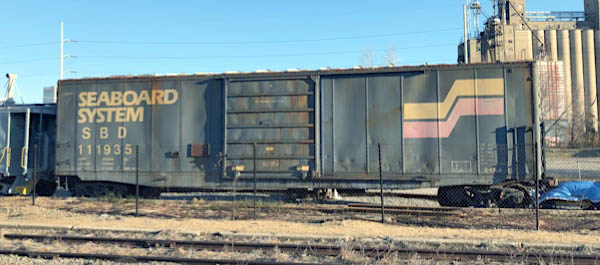
Richmond, Va / Dec 2017 / RWH
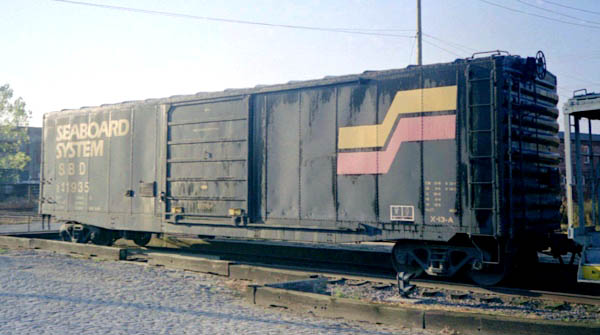
Richmond, Va / Oct 2001 / JCH

Seaboard System #21019
steel caboose / Richmond, Va / Dec 2017 / RWH

The Seaboard System was a Class 1 Railroad created by merging the railroads of the Family Lines System. Seaboard System was formed in 1983, in order to facilitate the eventual merger with CSX which occurred in July of 1986. Three caboose types were used by Seaboard System, including the M5, M6 and M7. SBD 21019 is a type M5. Production of the M5 began in 1964 and continued until 1969. They were built by converting old 36 foot boxcars (Pullman Standard built in 1942) numbered 0600-01039. This caboose designated as #1019, was built in 1969 at the West Jacksonville ACL shops in Jacksonville, Florida. While earlier cabooses of this type were painted orange, this one was originally gray and bore the Family Lines insignia as it appears today. The original number 01019 was changed to 21019 when Family Lines merged with CSX.
Old Dominion NRHS
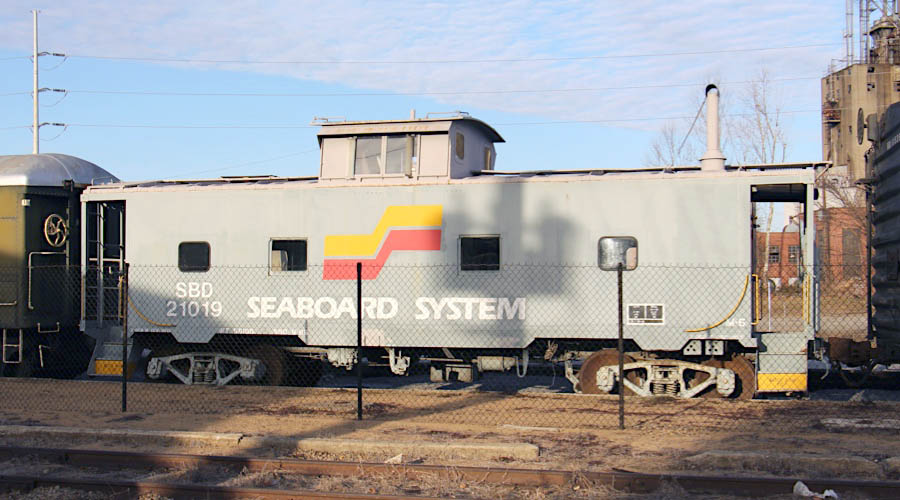
Richmond, Va / Dec 2017 / RWH
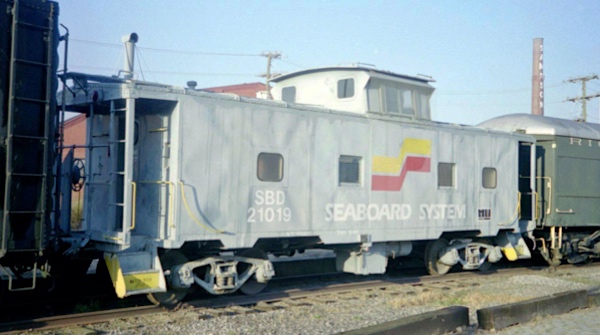
Richmond, Va / Oct 2001 / JCH
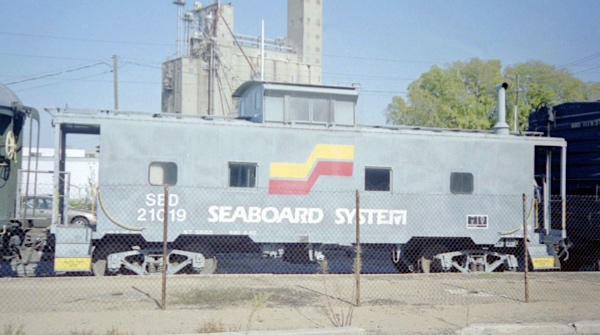
Richmond, Va / Oct 2001 / JCH

See also our Seaboard System fallen flag scrapbook in Mainlines
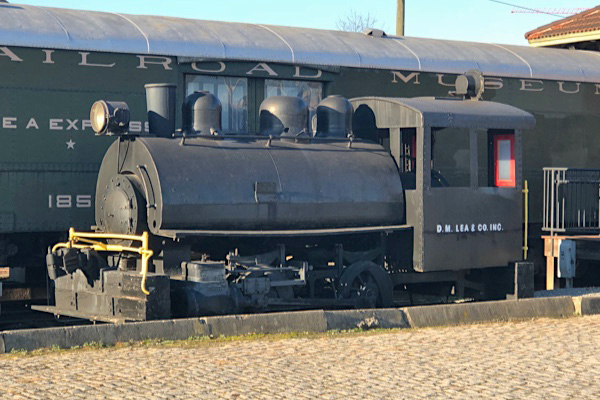
David M. Lee & Company
Porter saddle tank (1924) / Richmond, Va / Dec 2017 / RWH

Richmond, Va / Oct 2001 / JCH
 Triple Crossing
Triple Crossing
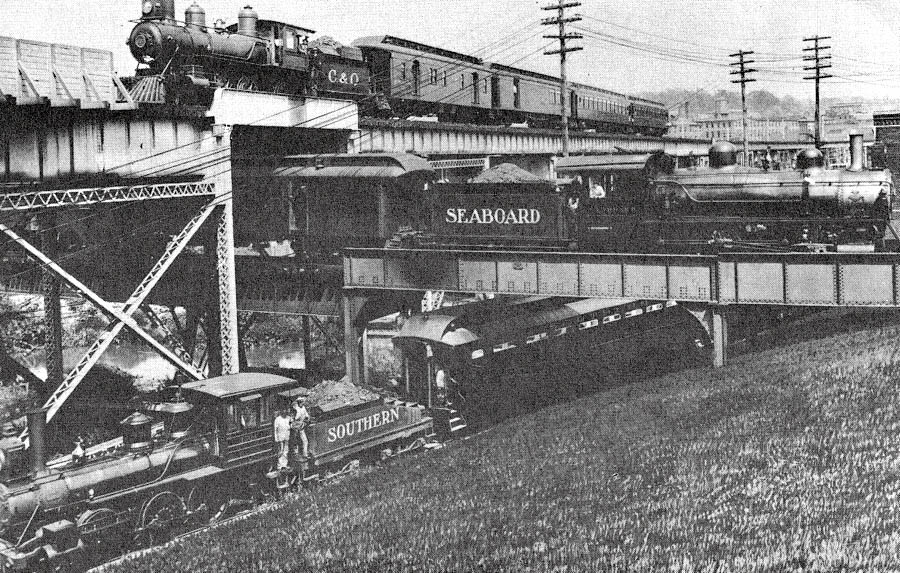
postcard / collection
Triple Crossing in Richmond, Virginia is one of two places in North America where three Class I railroads cross at different levels at the same spot, the other being Santa Fe Junction in Kansas City.
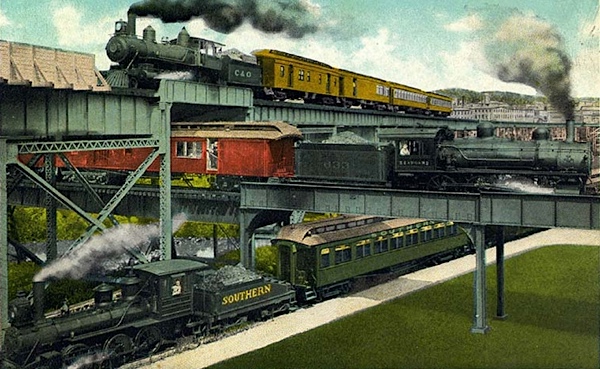 At the lowest (ground) level, the original Richmond and York River Railroad was extended after the American Civil War to connect with the Richmond and Danville Railroad, later part of the Southern Railway System, currently part of Norfolk Southern. The line runs east to West Point, Virginia.
At the lowest (ground) level, the original Richmond and York River Railroad was extended after the American Civil War to connect with the Richmond and Danville Railroad, later part of the Southern Railway System, currently part of Norfolk Southern. The line runs east to West Point, Virginia.
The middle level was the main line of the Seaboard Air Line Railroad, now part of CSX Transportation known as the "S" line, just south of Main Street Station. It is planned to become part of the Southeast High Speed Rail Corridor.
At the top level is the Peninsula Subdivision Trestle, a 3-mile-long (4.8 km) viaduct parallel to the north bank of the James River built by the Chesapeake and Ohio Railway in 1901 to link the former Richmond and Allegheny Railroad with C&O's Peninsula Subdivision to Newport News and export coal piers.
The viaduct, now owned by CSX Transportation, provided an alternate path to the notoriously unstable Church Hill Tunnel which buried a work train with fatalities on October 2, 1925. A locomotive and ten flat cars remain entombed with at least one rail worker, killing several others whose bodies were eventually recovered.
The triple crossing has been a Richmond attraction for railfans for over 100 years, although the number of photographic angles decreased in the 1990s due to a new flood wall.

Click to see the Richmond Triple Crossing area plotted on a Google Maps page
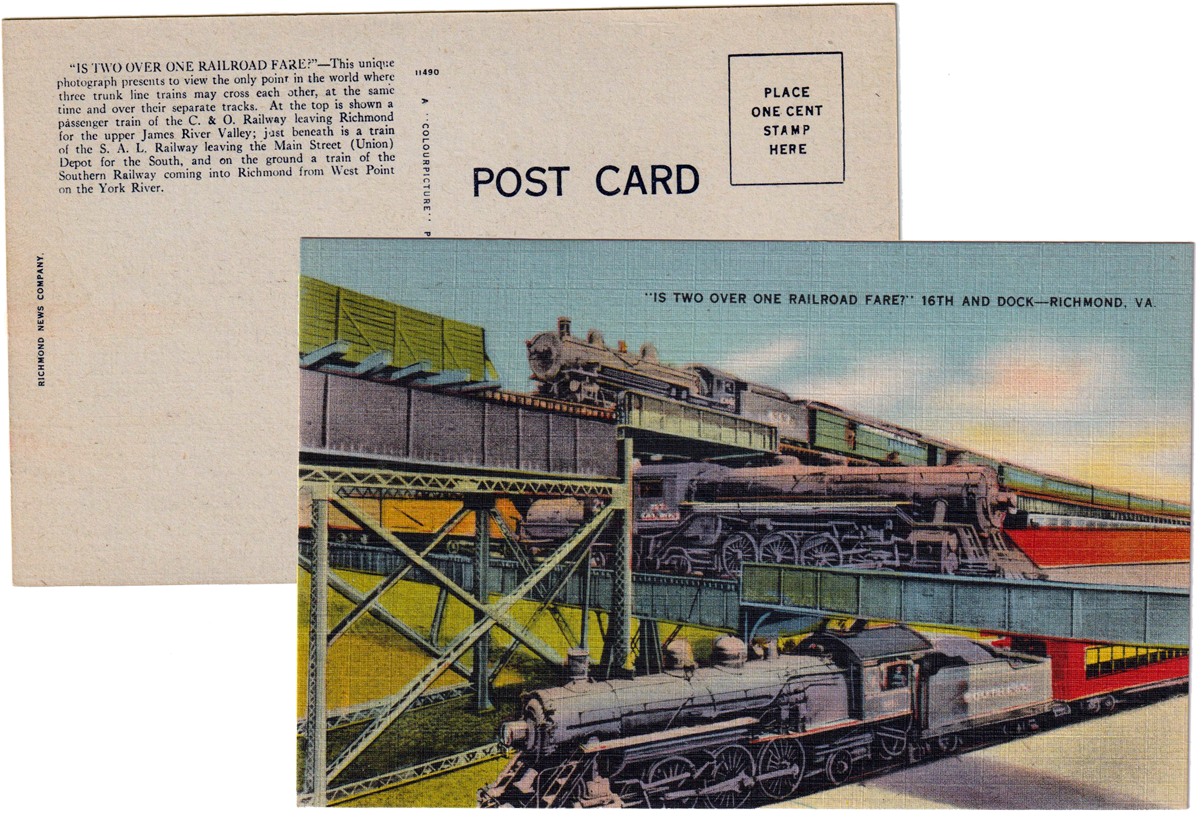
postcard / collection
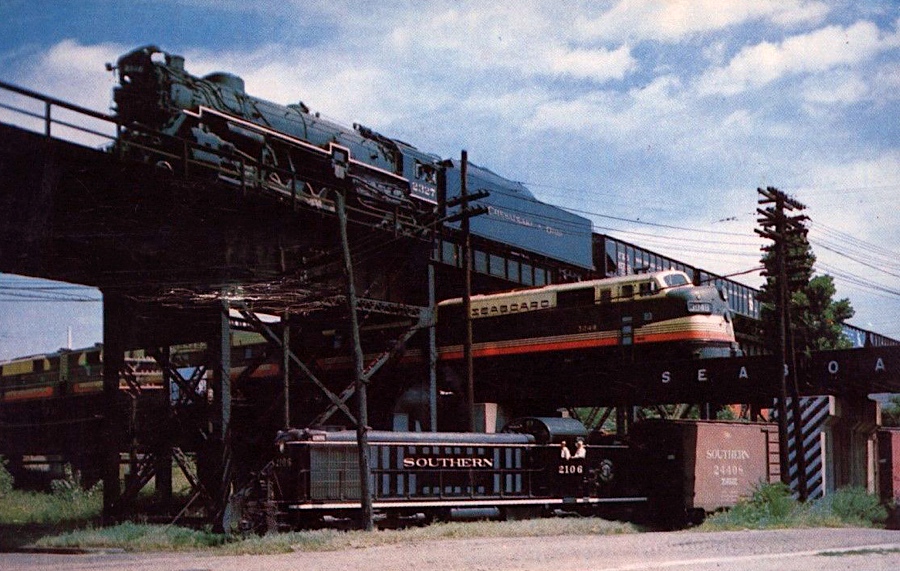
collection
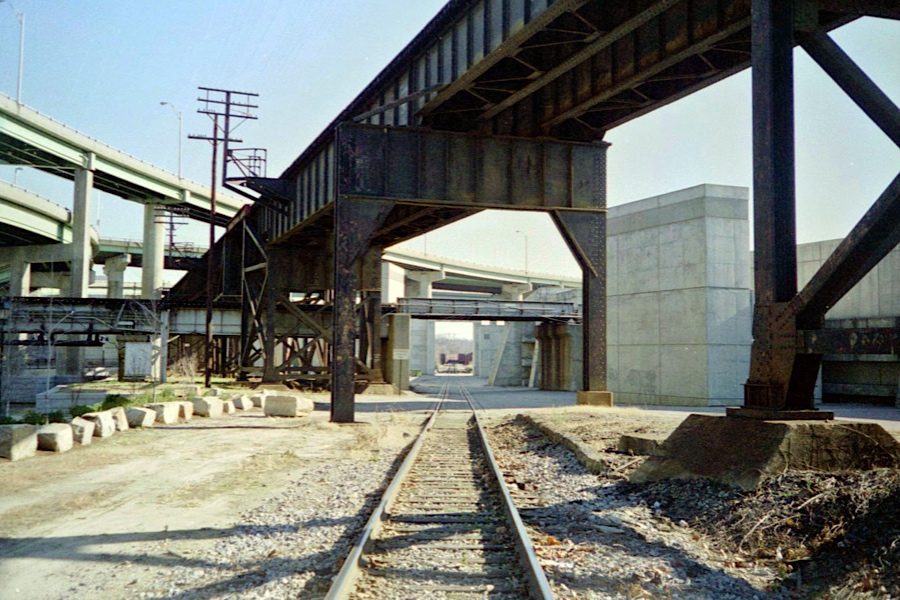
Richmond, Va / Oct 2001 / JCH
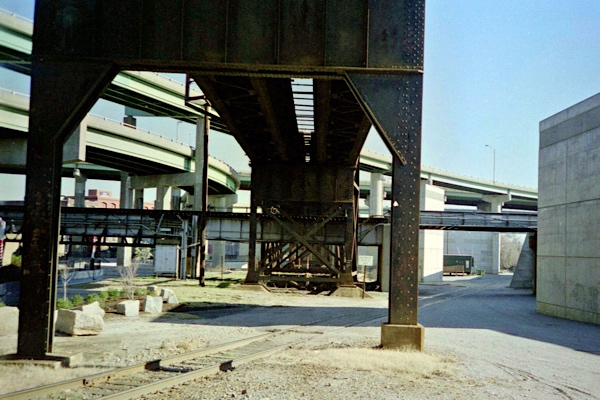
Richmond, Va / Oct 2001 / JCH
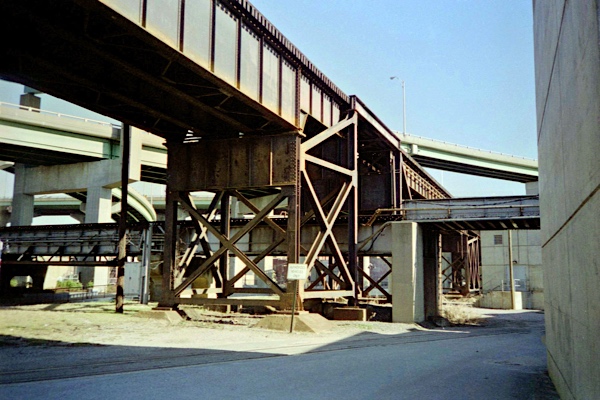
Richmond, Va / Oct 2001 / JCH
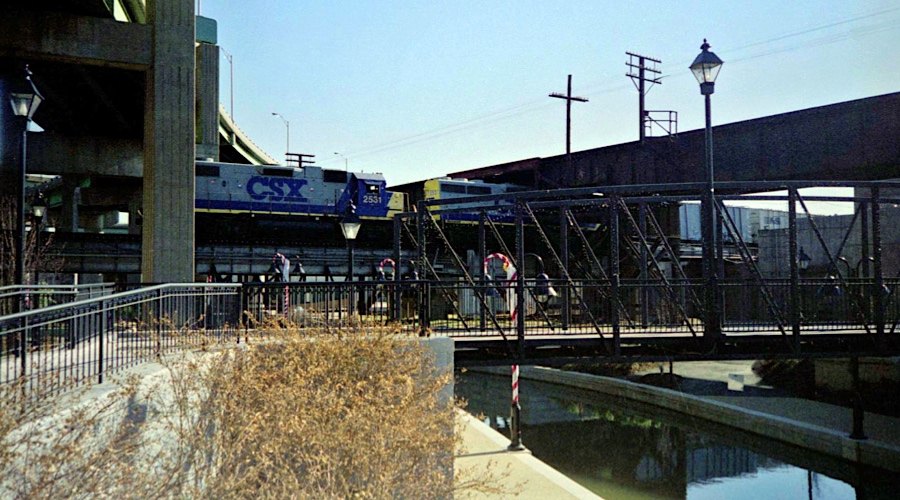
Richmond, Va / Oct 2001 / JCH

Check out the Industrial History Blog to see more Richmond Triple Crossing images
 Lagniappe
Lagniappe
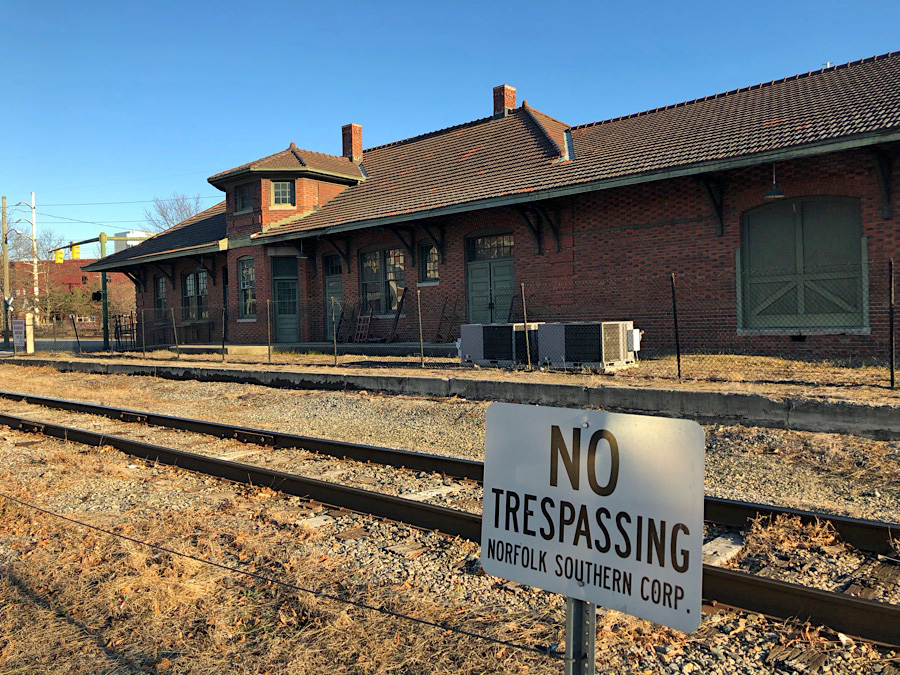
Corporate Line
Richmond, Va / Dec 2017 / RWH
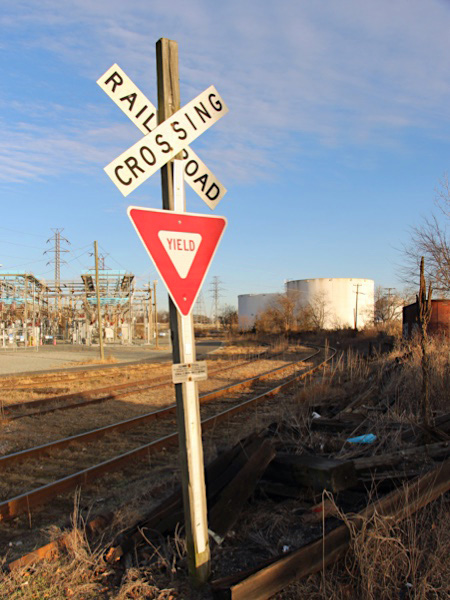
Still Standing Tall
Richmond, Va / Dec 2017 / RWH

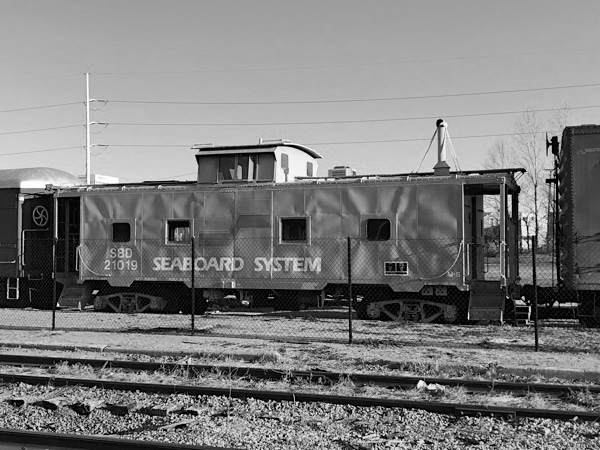
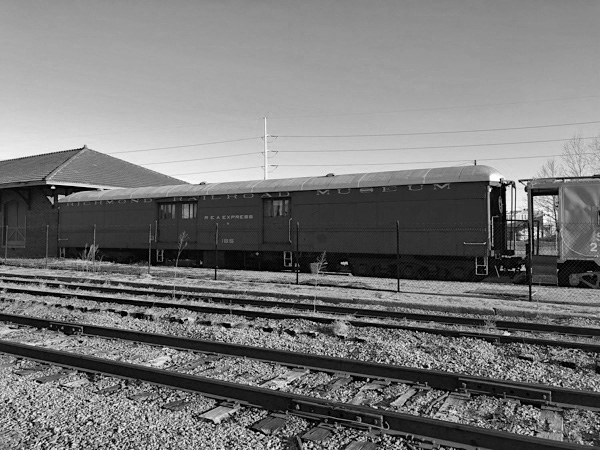
Monochrome Morning
Richmond, Va / Dec 2017 / RWH
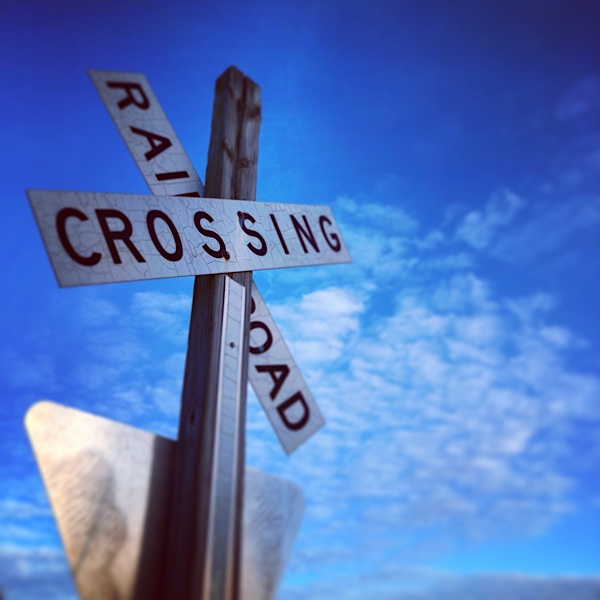
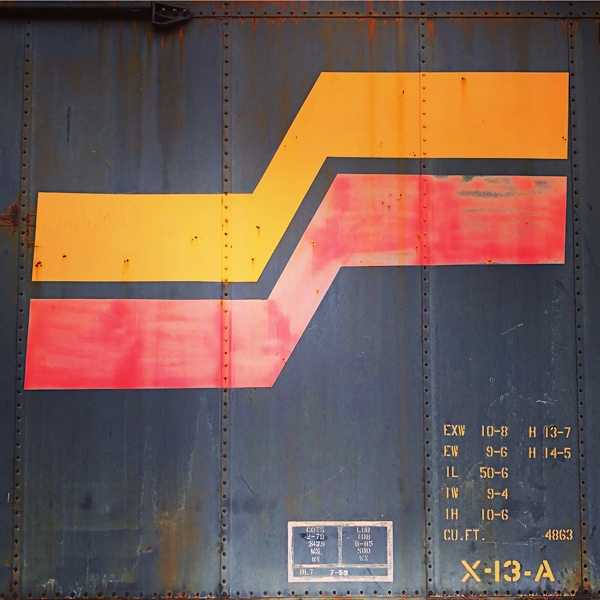
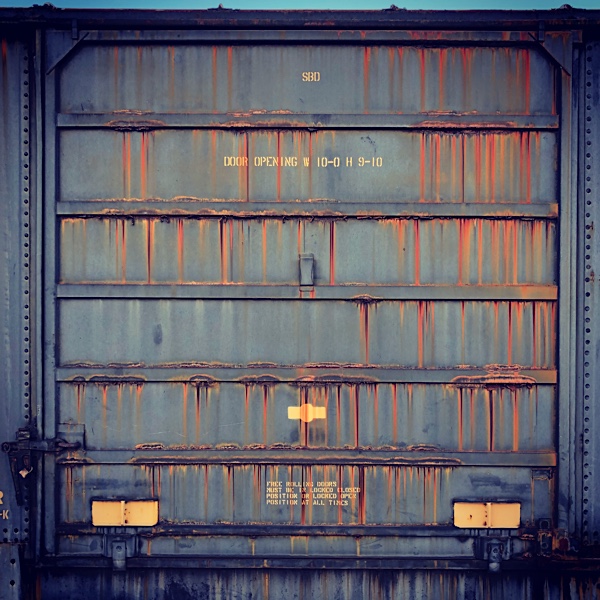
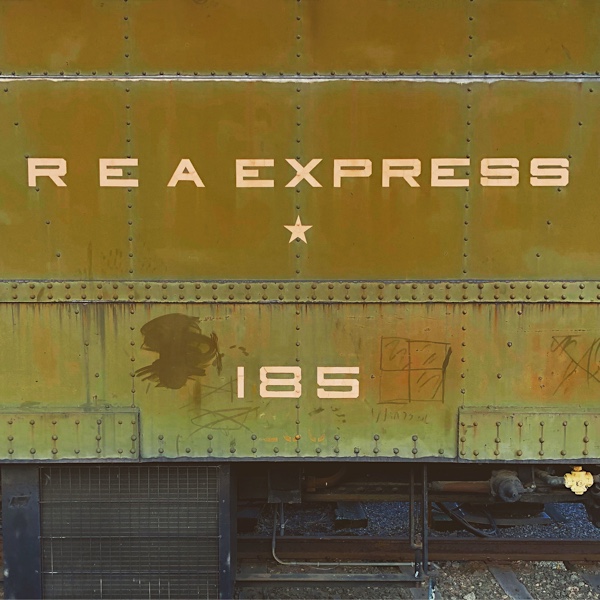
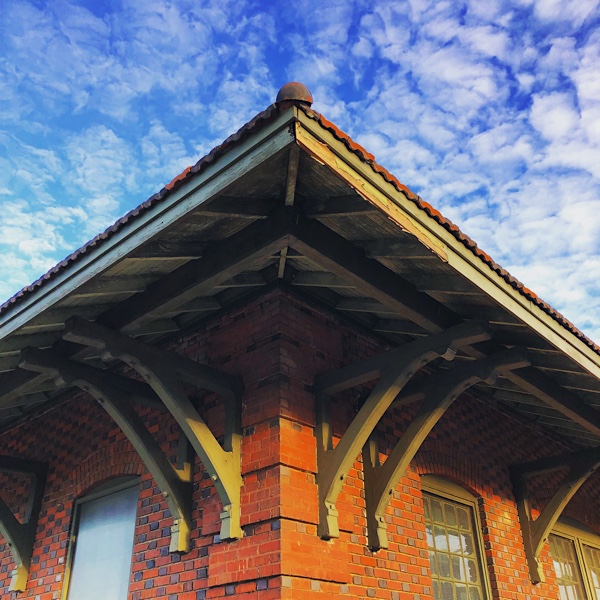
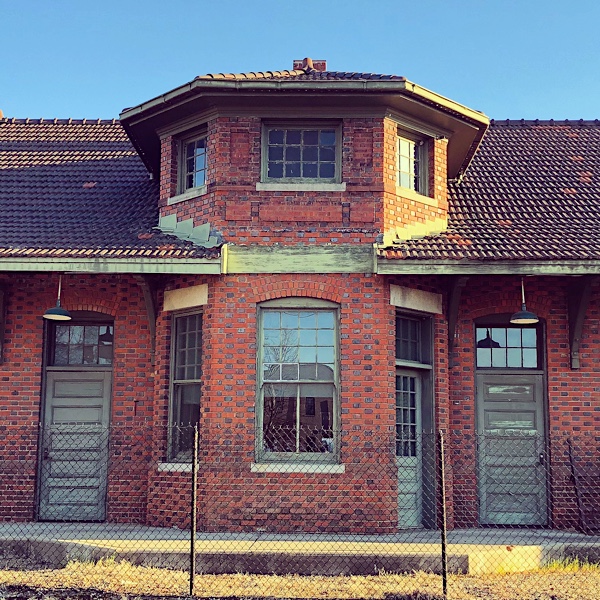
Hull Street Hues
Richmond, Va / Dec 2017 / RWH
 Snapshots
Snapshots
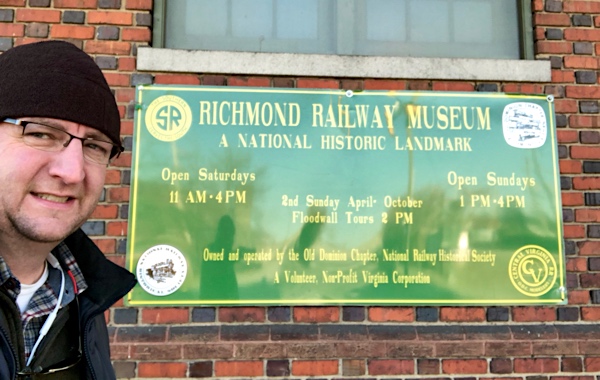
Richmond, Va / Dec 2017 / RWH
Links / Sources
- Richmond Railroad Museum website
- Old Dominion Chapter NRHS
- Old Dominion NRHS Excursion Train Information
